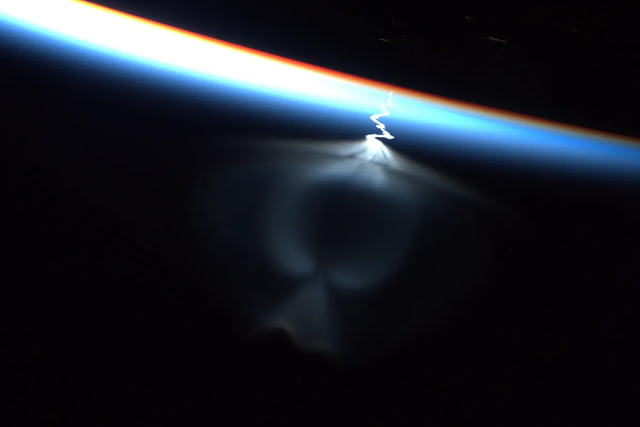Since their discovery in 2007 (the Lorimer
Burst), fast radio bursts (FRBs) have been one of the universe’s most baffling
events. These brief radio bursts are typically invisible after they have
occurred (except in the rare case of Repeating FRBs). Also, on September 14th,
2015, the first detection of a phenomenon predicted by General Relativity was
made: gravitational waves (GW). A revolution in astronomy has resulted from the
combination of these two phenomena, with new findings being made on a regular
basis.
GWs and FRBs may be related, according to a
new study by an Australian-American team of researchers led by the Australian
Research Council Centre of Excellence for Gravitational Wave Detection
(OzGrav). There may be a connection between a binary neutron star merger and a
brilliant non-repeating FRB, the researchers said in a report published in
Nature Astronomy. If verified, these findings could provide evidence that FRBs
are created by a wide range of cosmic phenomena, a hypothesis long held by
astronomers.
A group of physicists from OzGrav, UWA,
Curtin University’s International Centre for Radio Astronomy Research (ICRAR),
and UNLV’s Nevada Center for Astrophysics (NCfA) collaborated on the study.
Postdoctoral researcher at the University of Western Australia (UWA) Alexandra
Moroianu collaborated with scientists from OzGrav, ICRAR, and NCfA to
investigate a GW event that occurred at the same time as an FRB (a very unlikely
coincidence).
Black holes, neutron stars, magnetars, and
even hypothetical extraterrestrial signals have all been proposed as potential
sources of FRBs since they were first observed. More than a thousand FRBs have
been spotted so far, all thanks to specialized radio telescopes like CHIME in
Canada and the SKA Pathfinder in Australia (ASKAP). Astrophysicists’ preference
shifted over time to include young magnetars as a possible origin of FRBs, but
new evidence suggests that FRBs could originate from a wide range of sources.
Neutron star collisions inside binary star
systems are included. These unions have been expected by astronomers for a long
time. In a recent piece for The Conversation, ICRAR astronomer and study
co-author Clancy W. James explained: Scientists have known for a long time that
the merger of two neutron stars (a binary) should result in an outburst of
radio waves because of the black hole they create. Black holes are unable to
have magnetic fields, yet the two neutron stars will be extremely magnetic. The
merger of neutron stars and their subsequent collapse into a black hole is
thought to cause a quick radio burst due to the sudden disappearance of
magnetic fields. Electricity is typically generated by power plants through the
use of magnetic fields that are changed to generate electric fields. The high
electromagnetic fields of an FRB may be caused by the dramatic shift in magnetic
fields that occurs just before a star or planet collapses.
Moroianu and her team looked at the GW
event GW190425 that was observed on April 25th, 2019, by the Laser
Interferometer Gravitational-wave Observatory (LIGO), the Virgo Collaboration,
and CHIME to see if it supported their theory. Two non-spinning neutron stars
inspiraled one another, causing a rare GW event to be spotted by
astronomers (BNS). According to the LIGO team’s analysis of the signals, the
combined mass of these two stars was sufficient to create a “supermassive
neutron star.”
Moroianu discovered a one-time fast radio burst
(FRB 20190425A) that happened barely 2.5 hours after GW190425 and had the same
sky location using CHIME data that was released 2 years after the occurrence.
One of the LIGO detectors picked up the GW event, but proving that they were
related was difficult (LIGO Livingston). Furthermore, at the time, Earth was in
the way of NASA’s Fermi Gamma-ray Space Telescope, making it impossible for the
telescope to detect any gamma rays (which would have confirmed that the two
events were related). Yet the group tracked the gas the FRB moved through to
calculate its distance. High-frequency radio waves move through the
interstellar medium (ISM) more quickly than lower-frequency waves, which is a
defining feature of fast radio bursts. James elaborated, saying, “Since we
know the average gas density of the cosmos, we can connect this gas content to
distance, and this is known as the Macquart relation.” Also, the distance
from FRB 20190425A to GW190425 was almost identical. Bingo! ”
While the authors concede that this
correlation does not definitively establish that FRBs originate from neutron
star mergers, it does provide support for the idea that BNSs may also play a
role in FRB generation. Although they present evidence, they also claim that
the chances of the two signals being triggered by the same occurrence are
around 1 in 200. What is required at this time is the discovery of additional
instances of FRBs occurring at the same time as GW events. When the improved
Virgo and Kamioka Gravitational Wave Detector (KAGRA) are fully operational in
May, our ability to detect such occurrences will greatly increase.
These observatories, together with LIGO
Hanford and LIGO Livingston, will have increased sensitivity, allowing them to
detect thousands of events over the next few decades. In the meantime, the
number of FRB events recorded by CHIME, the SKA, and other FRB detectors is
growing exponentially, making for a solid comparison standard. James has hinted
that we might not have to wait too long for additional proof to surface: We
haven’t seen an optical or gamma-ray flash coming from the location of the fast
radio burst in almost four years, the evidence that would prove or disprove our
theory. A second opportunity to verify our assumptions could arise in a few
months. Whether or not this significant development was really a temporary blip
will become clear in a few months.


